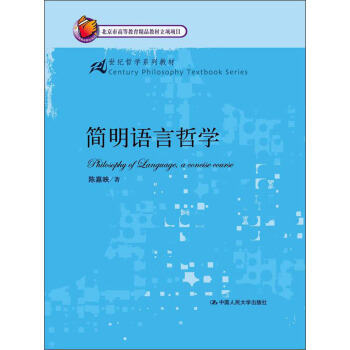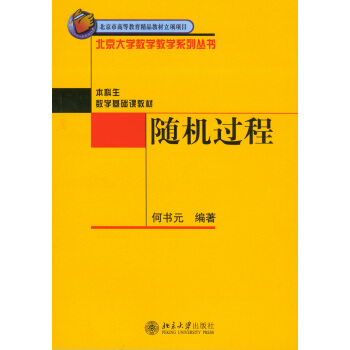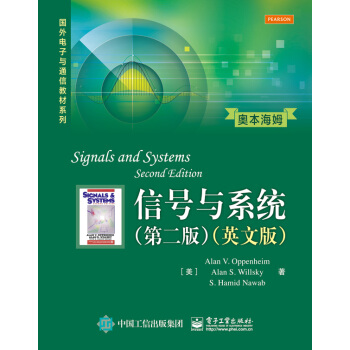

具体描述
内容简介
《信号与系统(第二版 英文版)》是美国麻省理工学院(MIT)的经典教材之一,讨论了信号与系统分析的基本理论、基本分析方法及其应用。全书共分11章,主要讲述了线性系统的基本理论、信号与系统的基本概念、线性时不变系统、连续与离散信号的傅里叶表示、傅里叶变换以及时域和频域系统的分析方法等内容。《信号与系统(第二版 英文版)》作者使用了大量在滤波、采样、通信和反馈系统中的实例,并行讨论了连续系统、离散系统、时域系统和频域系统的分析方法,使读者能透彻地理解各种信号系统的分析方法并比较其异同。
目录
CONTENTS1 SIGNALS AND SYSTEMS 1
1.0 Introduction 1
1.1 Continuous-Time and Discrete-Time Signals 1
1.1.1 Examples and Mathematical Representation 1
1.1.2 Signal Energy and Power 5
1.2 Transformations of the Independent Variable 7
1.2.1 Examples of Transformations of the Independent Variable 8
1.2.2 Periodic Signals 11
1.2.3 Even and Odd Signals 13
1.3 Exponential and Sinusoidal Signals 14
1.3.1 Continuous-Time Complex Exponential and Sinusoidal Signals 15
1.3.2 Discrete-Time Complex Exponential and Sinusoidal Signals 21
1.3.3 Periodicity Properties of Discrete-Time Complex Exponentials 25
1.4 The Unit Impulse and Unit Step Functions 30
1.4.1 The Discrete-Time Unit Impulse and Unit Step Sequences 30
1.4.2 The Continuous-Time Unit Step and Unit Impulse Functions 32
1.5 Continuous-Time and Discrete-Time Systems 38
1.5.1 Simple Examples of Systems 39
1.5.2 Interconnections of Systems 41
1.6 Basic System Properties 44
1.6.1 Systems with and without Memory 44
1.6.2 Invertibility and Inverse Systems 45
1.6.3 Causality 46
1.6.4 Stability 48
1.6.5 Time Invariance 50
1.6.6 Linearity 53
1.7 Summary 56
Problems 57
2 LINEAR TIME-INVARIANT SYSTEMS 74
2.0 Introduction 74
2.1 Discrete-Time LTI Systems: The Convolution Sum 75
2.1.1 The Representation of Discrete-Time Signals in Terms
of Impulses 75
2.1.2 The Discrete-Time Unit Impulse Response and the Convolution-Sum
Representation of LTI Systems 77
2.2 Continuous-Time LTI Systems: The Convolution Integral 90
2.2.1 The Representation of Continuous-Time Signals in Terms
of Impulses 90
2.2.2 The Continuous-Time Unit Impulse Response and the Convolution
Integral Representation of LTI Systems 94
2.3 Properties of Linear Time-invariant Systems 103
2.3.1 The Commutative Property 104
2.3.2 The Distributive Property 104
2.3.3 The Associative Property 107
2.3.4 LTI Systems with and without Memory 108
2.3.5 Invertibility of LTI Systems 109
2.3.6 Causality for LTI Systems 112
2.3.7 Stability for LTI Systems 113
2.3.8 The Unit Step Response of an LTI System 115
2.4 Causal LTI Systems Described by Differential and Difference
Equations 116
2.4.1 Linear Constant-Coefficient Differential Equations 117
2.4.2 Linear Constant-Coefficient Difference Equations 121
2.4.3 Block Diagram Representations of First-Order Systems Described
by Differential and Difference Equations 124
2.5 Singularity Functions 127
2.5.1 The Unit Impulse as an Idealized Short Pulse 128
2.5.2 Defining the Unit Impulse through Convolution 131
2.5.3 Unit Doublets and Other Singularity Functions 132
2.6 Summary 137
Problems 137
3 FOURIER SERIES REPRESENTATION OF PERIODIC SIGNALS 177
3.0 Introduction 177
3.1 A Historical Perspective 178
3.2 The Response of LTI Systems to Complex Exponentials 182
3.3 Fourier Series Representation of Continuous-Time
Periodic Signals 186
3.3.1 Linear Combinations of Harmonically Related Complex
Exponentials 186
3.3.2 Determination of the Fourier Series Representation
of a Continuous-Time Periodic Signal 190
3.4 Convergence of the Fourier Series 195
3.5 Properties of Continuous-Time Fourier Series 202
3.5.1 Linearity 202
3.5.2 Time Shifting 202
3.5.3 Time Reversal 203
3.5.4 Time Scaling 204
3.5.5 Multiplication 204
3.5.6 Conjugation and Conjugate Symmetry 204
3.5.7 Parseval's Relation for Continuous-Time Periodic Signals 205
3.5.8 Summary of Properties of the Continuous-Time Fourier Series 205
3.5.9 Examples 205
3.6 Fourier Series Representation of Discrete-Time
Periodic Signals 211
3.6.1 Linear Combinations of Harmonically Related Complex
Exponentials 211
3.6.2 Determination of the Fourier Series Representation of a
Periodic Signal 212
3.7 Properties of Discrete-Time Fourier Series 221
3.7.1 Multiplication 222
3.7.2 First Difference 222
3.7.3 Parseval's Relation for Discrete-Time Periodic Signals 223
3.7.4 Examples 223
3.8 Fourier Series and LTI Systems 226
3.9 Filtering 231
3.9.1 Frequency-Shaping Filters 232
3.9.2 Frequency-Selective Filters 236
3.10 Examples of Continuous-Time Filters Described by
Differential Equations 239
3.10.1 A Simple RC Lowpass Filter 239
3.10.2 A Simple RC Highpass Filter 241
3.11 Examples of Discrete-Time Filters Described by
Difference Equations 244
3.11.1 First-Order Recursive Discrete-Time Filters 244
3.11.2 Nonrecursive Discrete-Time Filters 245
3.12 Summary 249
Problems 250
4 THE CONTINUOUS-TIME FOURIER TRANSFORM 2,84
4.0 Introduction 284
4.1 Representation of Aperiodic Signals: The Continuous-Time
Fourier Transform 285
4.1.1 Development of the Fourier Transform Representation
of an Aperiodic.Signal 285
4.1.2 Convergence of Fourier Transforms 289
4.1.3 Examples of Continuous-Time Fourier Transforms 290
4.2 The Fourier Transform for Periodic Signals 296
4.3 Properties of the Continuous-Time Fourier Transform 300
4.3.1 Linearity 301
4.3.2 Time Shifting 301
4.3.3 Conjugation and Conjugate Symmetry 303
4.3.4 Differentiation and Integration 306
4.3.5 Time and Frequency Scaling 308
4.3.6 Duality 309
4.3.7 Parseval's Relation 312
4.4 The Convolution Property 314
4.4.1 Examples 317
4.5 The Multiplication Property 322
4.5.1 Frequency-Selective Filtering with Variable Center Frequenc) 325
4.6 Tables of Fourier Properties and of Basic Fourier
Transform Pairs 328
4.7 Systems Characterized by Linear Constant-Coefficient
Differential Equations 330
4.8 Summary 333
Problems 334
5 THE DISCRETE-TIME FOURIER TRANSFORM 358
5.0 Introduction 358
5.1 Representation of Aperiodic Signals: The Discrete-Time
Fourier Transform 359
5.1.1 Development of the Discrete-Time Fourier Transform 359
5.1.2 Examples of Discrete-Time Fourier Transforms 362
5.1.3 Convergence Issues Associated with the Discrete-Time Fourier
Transform 366
5.2 The Fourier Transform for Periodic Signals 367
5.3 Properties of the Discrete-Time Fourier Transform 372
5.3.1 Periodicity of the Discrete-Time Fourier Transform 373
5,3.2 Linearity of the Fourier Transform 373
5.3.3 Time Shifting and Frequency Shifting 373
5.3.4 Conjugation and Conjugate Symmetry 375
5.3.5 Differencing and Accumulation 375
5.3.6 Time Reversal 376
5.3.7 Time Expansion 377
5.3.8 Differentiation in Frequency 380
5.3.9 Parseval's Relation 380
5.4 The Convolution Property 382
5.4.1 Examples 383
5.5 The Multiplication Property 388
5.6 Tables of Fourier Transform Properties and Basic Fourier
Transform Pairs 390
5.7 Duality 390
5.7.1 Duality in the Discrete-Time Fourier Series 391
5.7.2 Duality between the Discrete-Time Fourier Transform ~md the
Continuous-Time Fourier Series 395
5.8 Systems Characterized by Linear Constant-Coefficient
Difference Equations 396
5.9 Summary 399
Problems 400
6 TIME AND FREQUENCY CHARACTERIZATION
OF SIGNALS AND SYSTEMS 423
6.0 Introduction 423
6.1 The Magnitude-Phase Representation of the Fourier
Transform 423
6.2 The Magnitude-Phase Representation of the Frequency Response
of LTI Systems 427
6.2.1 Linear and Nonlinear Phase 428
6.2.2 Group Delay 430
6.2.3 Log-Magnitude and Phase Plots 436
6.3 Time-Domain Properties of Ideal Frequency-Selective
Filters 439
6.4 Time-Domain and Frequency-Domain Aspects of Nonideal
Filters 444
6.5 First-Order and Second-Order Continuous-Time Systems 448
6.5.1 First-Order Continuous-Time Systems 448
6.5.2 Second-Order Continuous-Time Systems 451
6.5.3 Bode Plots for Rational Frequency Responses 456
6.6 First-Order and Second-Order Discrete-Time Systems 461
6.6.1 First-Order Discrete-Time Systems 461
6.6.2 Second-Order Discrete-Time Systems 465
6.7 Examples of Time- and Frequency-Domain Analysis
of Systems 472
6.7.1 Analysis of an Automobile Suspension System 473
6.7.2 Examples of Discrete-Time Nonrecursive Filters 476
6.8 Summary 482
Problems 483
7 SAMPLING 514
7.0 Introduction 514
7.1 Representation of a Continuous-Time Signal by Its Samples:
The Sampling Theorem 515
7.1.1 Impulse-Train Sampling 516
7.1.2 Sampling with a Zero-Order Hold 520
7.2 Reconstruction of a Signal from Its Samples Using
Interpolation 522
7.3 The Effect of Undersampling: Aliasing 527
7.4 Discrete-Time Processing of Continuous-Time Signals 534
7.4.1 Digital Differentiator 541
7.4.2 Half-Sample Delay 543
7.5 Sampling of Discrete-Time Signals 545
7.5.1 Impulse-Train Sampling 545
7.5.2 Discrete-Time Decimation and Interpolation 549
7.6 Summary 555
Problems 556
8 COMMUNICATION SYSTEMS 582
8.0 Introduction 582
8.1 Complex Exponential and Sinusoidal Amplitude Modulation 583
8.1.1 Amplitude Modulation with a Complex Exponential Car~ier 583
8.1.2 Amplitude Modulation with a Sinusoidal Carrier 585
8.2 Demodulation for Sinusoidal AM 587
8.2.1 Synchronous Demodulation 587
8.2.2 Asynchronous Demodulation 590
8.3 Frequency-Division Multiplexing 594
8.4 Single-Sideband Sinusoidal Amplitude Modulation 597
8.5 Amplitude Modulation with a Pulse-Train Carrier 601
8.5.1 Modulation of a Pulse-Train Carrier 601
8.5.2 Time-Division Multiplexing 604
8.6 Pulse-Amplitude Modulation 604
8.6.1 Pulse-Amplitude Modulated Signals 604
8.6.2 Intersymbol Interference in PAM Systems 607
8.6.3 Digital Pulse-Amplitude and Pulse-Code Modulation 610
8.7 Sinusoidal Frequency Modulation 611
8.7.1 Narrowband Frequency Modulation 613
8.7.2 Wideband Frequency Modulation 615
8.7.3 Periodic Square-Wave Modulating Signal 617
8.8 Discrete-Time Modulation 619
8.8.1 Discrete-Time Sinusoidal Amplitude Modulation 619
8.8.2 Discrete-Time Transmodulation 623
8.9 Summary' 623
Problems 625
9 THE LAPLACE TRANSFORM 654
9.0 Introduction 654
9.1 The Laplace Transform 655
9.2 The Region of Convergence for Laplace Transforms 662
9.3 The Inverse Laplace Transform 670
9.4 Geometric Evaluation of the Fourier Transform from the
Pole-Zero Plot 674
9.4.1 First-Order Systems 676
9.4.2 Second-Order Systems 677
9.4.3 AU-Pass Systems 681
9.5 Properties of the Laplace Transform 682
9.5.1 Linearity of the Laplace Transform 683
9.5.2 Time Shifting 684
9.5.3 Shifting in the s-Domain 685
9.5.4 Time Scaling 685
9.5.5 Conjugation 687
9.5.6 Convolution Property 687
9.5.7 Differentiation in the Time Domain 688
9.5.8 Differentiation in the s-Domain 688
9.5.9 Integration in the Time Domain 690
9.5.10 The Initial- and Final-Value Theorems 690
9.5.11 Table of Properties 691
9.6 Some Laplace Transform Pairs 692
9.7 Analysis and Characterization of LTI Systems Using the
Laplace Transform 693
9.7.1 Causality 693
9.7.2 Stability 695
9.7.3 LTI Systems Characterized by Linear Constant-Coefficient
Differential Equations 698
9.7.4 Examples Relating System Behavior to the System Function 701
9.7.5 Butterworth Filters 703
9.8 System Function Algebra and Block Diagram
Representations 706
9.8.1 System Functions for Interconnections of LTI Systems 707
9.8.2 Block Diagram Representations for Causal LTI Systems Described
by Differential Equations and Rational System Functions 708
9.9 The Unilateral Laplace Transform 714
9.9.1 Examples of Unilateral Laplace Transforms 714
9.9.2 Properties of the Unilateral Laplace Transform 716
9.9.3 Solving Differential Equations Using the Unilateral Laplace
Transform 719
9.10 Summary 720
Problems 721
10 THE Z-TRANSFORM 741
10.0 Introduction 741
10.1 The z-Transform 741
10.2 The Region of Convergence for the z-Transform 748
10.3 The Inverse z-Transform 757
10.4 Geometric Evaluation of the Fourier Transform from the
Pole-Zero Plot 763
10.4.1 First-Order Systems 763
10.4.2 Second-Order Systems 765
10.5 Properties of the z-Transform 767
1.0.5.1 Linearity 767
10.5.2 Time Shifting 767
10.5.3 Scaling in the z-Domain 768
10.5.4 Time Reversal 769
10.5.5 Time Expansion 769
10.5.6 Conjugation 770
10.5.7 The Convolution Property 770
10.5.8 Differentiation in the z-Domain 772
10.5.9 The Initial-Value Theorem 773
10.5.10 Summary of Properties 774
10.6 Some Common z-Transform Pairs 774
10.7 Analysis and Characterization of LTI Systems Using
z-Transforms 774
10.7.1 Causality 776
10.7.2 Stability 777
10.7.3 LTI Systems Characterized by Linear Constant-Coefficient
Difference Equations 779
10.7.4 Examples Relating System Behavior to the System Function 781
10.8 System Function Algebra and Block Diagram
Representations 783
10.8.1 System Functions for Interconnections of LTI Systems 784
10.8.2 Block Diagram Representations for Causal LTI Systems Described
by Difference Equations and Rational System Functions 784
10.9 The Unilateralz-Transform 789
10.9.1 Examples of Unilateral z-Transforms and Inverse Transforms 790
10.9.2 Properties of the Unilateral z-Transform 792
10.9.3 Solving Difference Equations Using the Unilateral
z-Transform 795
10.10 Summary 796
Problems 797
11 LINEAR FEEDBACK SYSTEMS 816
11.0 Introduction 816
11.1 Linear Feedback Systems 819
11.2 Some Applications and Consequences of Feedback 820
11.2.1 Inverse System Design 820
11.2.2 Compensation for Nonideal Elements 821
11.2.3 Stabilization of Unstable Systems 823
11.2.4 Sampled-Data Feedback Systems 826
11.2.5 Tracking Systems 828
11.2.6 Destabilization Caused by Feedback 830
11.3 Root-Locus Analysis of Linear Feedback Systems 832
11.3.1 An Introductory Example 833
11.3.2 Equation for the Closed-Loop Poles 834
11.3.3 The End Points of the Root Locus: The Closed-Loop Poles for
K = 0 and I|K|=+ 836
11.3.4 The Angle Criterion 836
11.3.5 Properties of the Root Locus 841
11.4 The Nyquist Stability Criterion 846
11.4.1 The Encirclement Property 847
11.4.2 The Nyquist Criterion for Continuous-Time LTI
Feedback Systems 850
11.4.3 The Nyquist Criterion for Discrete-Time LTI
Feedback Systems 856
11.5 Gain and Phase Margins 858
11.6 Summary 866
Problems 867
APPENDIX PARTIAL-FRACTION EXPANSION 909
BIBLIOGRAPHY 921
ANSWERS 931
INDEX 941
前言/序言
用户评价
这本书的封面设计算得上是相当经典的理工科教材风格了,沉静的蓝色作为主色调,配合上简洁的字体,给人一种扎实、权威的感觉。当我第一次捧在手里时,就能感受到纸张的质感,厚实而带有微磨砂的触感,印刷也十分清晰,即使是细小的公式符号,也一点不模糊,这一点对于阅读数学和工程类书籍来说至关重要,因为任何细微的错误都可能导致整个推导过程的偏差。书本的装订也很牢固,翻页的时候不会出现松散的迹象,这保证了它能经受住反复查阅和长时间使用的考验。它不像那些花里胡哨的科普读物,而是将所有精力都放在了内容本身,这种务实的设计哲学,在我看来,是对读者最基本的尊重。我喜欢它那种“大道至简”的气息,仿佛在告诉我们,内容才是王者,外在的浮华都显得不那么重要。在拿到书的第一时间,我就迫不及待地翻阅了一下目录,里面清晰地划分了各个章节,并且从基础概念到高级应用,循序渐进,这让我对整个课程的学习脉络有了初步的认识。尤其是一些抽象的概念,在经过精炼的标题和副标题的点缀下,显得更加容易理解和记忆。可以说,这本书从拿到手的那一刻起,就已经传递出一种严谨和专业的信号,让我对接下来的学习充满了期待,相信它会成为我探索信号与系统这个广阔领域的得力助手。
评分当我开始接触这本书的时候,我对于“系统”和“信号”这两个概念其实是有些模糊的。我只知道它们在工程领域非常重要,但具体是什么,以及它们之间是如何联系的,我并没有一个清晰的认识。然而,随着我一页一页地阅读下去,那种模糊感逐渐被清晰的理解所取代。书中对“信号”的定义,从数学表达式到物理意义,都进行了详尽的解释,并且列举了各种常见的信号类型,如正弦信号、方波信号、冲激信号等,并对它们的特性进行了深入分析。而“系统”的概念,则被形象地比喻为对信号进行某种“处理”的“黑盒子”,通过对输入信号进行变换,产生输出信号。书中对“线性”、“时不变”等系统性质的讲解,更是让我对系统的行为有了更深入的理解。我尤其记得,当作者在介绍卷积这个操作时,并没有直接给出复杂的数学公式,而是通过一个非常形象的“滑动和累积”的过程来解释,这让我对信号在系统中如何被“塑造”有了直观的认识。这本书让我明白,信号与系统并非是孤立的理论,而是描述和分析现实世界中各种物理现象和工程过程的强大工具。这种由模糊到清晰的转变,让我对这个领域产生了浓厚的兴趣,并充满了继续探索的动力。
评分我一直认为,一本优秀的教材,不仅在于它能够教授知识,更在于它能够激发读者的学习兴趣,并引导他们主动探索。这本书在这方面做得很出色。它不像一些过于枯燥的学术专著,而是将理论知识与丰富的实际应用场景巧妙地融合在一起。在介绍离散时间信号和系统的部分,书中引用了大量来自通信、控制、图像处理等领域的实际案例,例如数字滤波器的设计、音频信号的压缩、以及雷达信号的处理等等。这些生动的例子,让我能够清晰地看到书本上抽象的数学模型是如何在现实世界中发挥作用的,极大地增强了我学习的动力和成就感。我记得在学习Z变换的时候,书中通过对数字滤波器频率响应的分析,展示了Z变换在设计和分析滤波器时的强大能力,这种“学以致用”的感觉,让我感到非常有价值。此外,书中还穿插了一些“思考题”和“项目建议”,这些内容并非强制性的,但却能够引导我们进一步思考,甚至尝试去实现一些简单的实验,这对于巩固所学知识、培养实践能力非常有益。阅读这本书,我感觉自己不仅仅是在被动地接受知识,更像是在与一位经验丰富的导师进行深入的交流,他总能适时地提出问题,引导我走向更深层次的理解,并激发我对未知领域的探索欲望。
评分这本书的语言风格,我个人认为是非常适合作为一本教材的。它在保持学术严谨性的同时,又没有显得过于晦涩难懂。作者的遣词造句,力求精确,但又不会使用过多生僻的专业术语,而是尽量用读者能够理解的语言来阐述复杂的概念。我尤其欣赏书中在解释一些关键定义或定理时,会使用一些类比和形象的比喻,这大大降低了理解的门槛。例如,在讲解“因果性”的时候,作者会将其类比于“今天发生的事情不会影响昨天”这样简单的生活常识,这种贴近生活的比喻,让我能够迅速抓住概念的本质。而且,书中在引入新的数学工具时,也会先解释其存在的必要性,以及它能够解决什么样的问题,这使得我们在学习数学工具时,不再是机械地记忆公式,而是能够理解其在工程实践中的实际意义。整体而言,这本书的语言流畅自然,逻辑清晰,读起来不会让人感到生涩或枯燥,它在严谨和通俗之间找到了一个非常好的平衡点,使得学习过程更加顺畅和有效。
评分作为一名对信号与系统这个领域充满好奇的学习者,我在选择教材时,通常会非常看重其内容的深度和广度,以及是否能够引领我深入理解学科的精髓。这本书在这方面无疑给我留下了深刻的印象。它不仅仅是知识点的简单堆砌,而是通过层层递进的逻辑,将复杂的概念一一拆解,并用清晰易懂的语言进行阐述。我特别欣赏书中对于基本原理的深入剖析,例如傅里叶级数和傅里叶变换的引入,作者并没有止步于公式的推导,而是详细解释了它们在时域和频域之间建立联系的深刻意义,以及它们在信号分析中的核心作用。这种解释方式,让我能够真正理解“为什么”要学习这些内容,而不是死记硬背。“系统”的概念,在书中也被赋予了多维度的理解,从线性时不变系统到更复杂的系统模型,都有详实的介绍,并通过大量的工程实例来佐证理论的实际应用价值。我尤其喜欢书中对于卷积定理的讲解,它不仅给出了数学上的定义,还形象地类比了信号在系统中的“拖尾”效应,使得这个抽象的概念变得直观起来。这种深入浅出的教学方法,使得我在阅读过程中,能够感受到知识的层层剥开,从模糊到清晰,从未知到熟悉。它鼓励我去思考,去探索,去发现隐藏在公式背后的物理意义和工程原理,这对于培养批判性思维和解决实际问题的能力至关重要。
评分这本书在图示和例证的运用上,可谓是煞费苦心,极大地提升了阅读的直观性和理解的深度。我注意到,书中并非简单地堆砌公式,而是大量地使用了各种图形来辅助说明。比如,在讲解信号的时域特性时,书中会配以大量的波形图,清晰地展示了信号的幅度、周期、相位等关键信息。而在介绍傅里叶变换时,则会配以频域的幅度谱和相位谱图,直观地展现了信号的频率成分。这种图文并茂的呈现方式,使得抽象的数学概念变得触手可及。我尤其欣赏书中对于系统响应的图解,例如阶跃响应、冲激响应等,通过不同形状的曲线,能够非常形象地展现系统对不同输入信号的反应,这对于理解系统的动态特性非常有帮助。此外,书中还包含了一些巧妙的示意图,用来解释一些更复杂的概念,比如卷积运算是如何通过“翻转、滑动、相乘、积分”等步骤来实现的,这些示意图能够帮助我建立起直观的理解,从而避免了单纯依靠公式而产生的迷茫。可以说,本书的图示不仅仅是装饰,更是理解和掌握知识的重要辅助工具,它让那些原本看似深奥的理论,变得更加生动有趣,也更容易被接受。
评分在阅读过程中,我越来越深刻地体会到本书在概念阐释上的独到之处。作者似乎有一种化繁为简的魔力,能够将那些原本抽象、难以捉摸的概念,变得清晰而富有条理。比如,在讲解“系统”这个核心概念时,书中首先从输入输出关系的角度来定义,然后逐步引入了“因果性”、“稳定性”、“线性”、“时不变性”等关键属性。作者并没有一次性抛出所有定义,而是通过大量的具体例子,来帮助读者理解这些属性的含义。我记得在学习“稳定性”的时候,书中通过一个简单的弹簧振子模型,生动地展示了当外部激励消失后,系统是能够恢复到平衡状态(稳定),还是会无限振荡下去(不稳定)。这种循序渐进的讲解方式,让我能够一步步地构建起对概念的完整认知。而且,书中在引入一些新的数学工具时,也会先解释它们在解决实际问题中的必要性,然后再给出具体的数学定义和推导。这种“问题导向”的教学方法,让我始终保持着学习的积极性,并能够清晰地看到所学知识的价值所在。可以说,这本书就像一位经验丰富的向导,带领我在信号与系统的迷宫中,走出一条清晰而有序的道路,让我能够自信地探索和理解这个复杂的领域。
评分本书在数学的运用和讲解方面,展现出了极高的专业性和严谨性。作者在引入各种数学工具,如拉普拉斯变换、傅里叶变换、Z变换等时,都进行了非常详细的推导和论证。而且,这些数学工具的引入,并非孤立存在,而是紧密地服务于信号与系统的分析和设计。例如,在讲解拉普拉斯变换时,作者会详细说明它如何能够将复杂的微分方程转化为代数方程,从而简化系统的稳定性分析和瞬态响应的求解。这种数学上的严谨性,让我能够深刻理解每一个公式的由来和意义,而不是仅仅停留在表面。书中对于数学证明的步骤也清晰明了,逻辑性很强,即使是比较复杂的定理,也能通过一步步的证明过程,让人逐渐理解其内在的逻辑。我特别欣赏作者在处理傅里叶变换的收敛性问题时,并没有简单带过,而是详细讨论了不同信号类型的收敛条件,这对于我理解傅里叶变换的适用范围和局限性起到了关键作用。此外,书中还巧妙地运用了复数和复指数函数等数学概念,来统一描述各种信号的性质,这让我感受到了数学在揭示物理现象和工程规律方面的强大力量。可以说,本书为我打下了坚实的数学基础,让我能够更加自信地面对后续更复杂的信号处理和系统分析问题。
评分本书对于练习题的编排,也体现了其作为一本优秀教材的严谨性。我发现,书中的习题并非千篇一律,而是涵盖了从基础概念的巩固到复杂问题的求解,从理论推导到实际应用的各个层面。在每个章节的末尾,都设置了不同难度的习题,既有帮助巩固基本概念的选择题和填空题,也有需要运用所学理论进行推导和计算的综合题。我特别喜欢书中那些“挑战性”的习题,它们通常需要将多个章节的知识融会贯通,才能顺利解答。这些题目,不仅能够检验我对知识的掌握程度,更能够激发我去深入思考,去探索知识的边界。此外,书中还包含了一些“设计型”的题目,要求读者根据给定的条件,设计出满足特定要求的系统或滤波器,这对于培养实际工程设计能力非常有帮助。我记得在学习数字信号处理的部分,有一道题目要求设计一个低通滤波器,需要综合考虑截止频率、阻带衰减等多个因素,这让我有机会将理论知识应用到实际的设计中去。这本书的习题,不仅仅是检验学习成果的工具,更是引导读者深入理解和掌握知识的重要途径,它让我感觉自己真正地参与到了知识的构建过程中。
评分作为一本英文原版教材,这本书在术语的规范性和国际化的表达上,无疑具有得天独厚的优势。虽然初读时可能会遇到一些不太熟悉的英文专业词汇,但随着阅读的深入,你会逐渐习惯并掌握它们。我注意到,书中在首次引入一个重要的专业术语时,通常会给出清晰的定义,并且在后续的章节中,会反复使用该术语,形成一种语言上的“熟悉感”。而且,英文教材在数学公式和符号的表达上,通常遵循国际通行的标准,这对于我未来与其他国家的研究者进行交流,或者阅读相关的英文文献,都非常有帮助。书中对于一些概念的阐述,也更加倾向于从工程应用的视角出发,例如在介绍离散傅里叶变换(DFT)时,会直接将其与计算机实现和数字信号处理的实际需求联系起来,这让我能够更早地意识到这些理论的实际应用价值。尽管是英文原版,但作者在行文时,似乎也充分考虑到了不同文化背景读者的理解需求,力求清晰和准确。总而言之,阅读英文原版教材,本身就是一种学习过程,它不仅能够帮助我掌握信号与系统这门学科的知识,更能提升我的英语阅读能力和专业术语的掌握水平,为我未来的学术或职业发展打下坚实的基础。
评分信号的经典书籍,值得慢慢钻研
评分京东的书应该擦拭干净,塑封后再发货。 拿到手里摸一把全是灰尘
评分物流很给力,书的质量也不错
评分这本书是信号与系统课程的经典巨著,可以评价的只有书的印刷,总体感觉不错
评分还是京东直营给力,发票随书就到了!
评分很好
评分不哦错
评分挺好的
评分学习必备,补充能量,啊
相关图书
本站所有内容均为互联网搜索引擎提供的公开搜索信息,本站不存储任何数据与内容,任何内容与数据均与本站无关,如有需要请联系相关搜索引擎包括但不限于百度,google,bing,sogou 等
© 2026 book.idnshop.cc All Rights Reserved. 静思书屋 版权所有



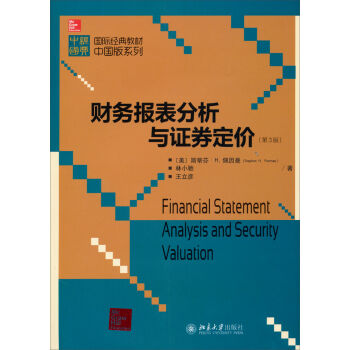
![国际贸易理论与实务双语教程/全国高等院校“十二五”规划教材 [Theory and Practice of International Trade A Bilingual Course] pdf epub mobi 电子书 下载](https://pic.tinynews.org/11496987/53bfc03dN540277e9.jpg)
![美国商学院原版教材精选系列:行为金融学(心理、决策与市场) [Behavioral Finance Psychology,Decision-Making,and Markets] pdf epub mobi 电子书 下载](https://pic.tinynews.org/10400992/06d55398-fe77-4902-89c4-150e49bd6f3d.jpg)
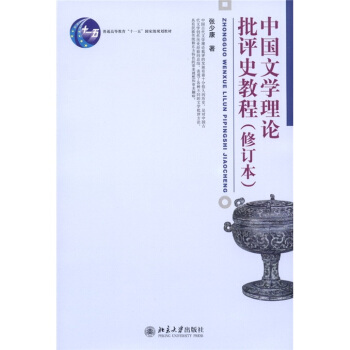


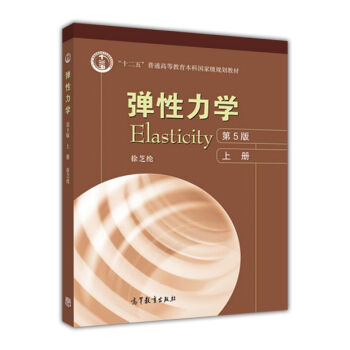


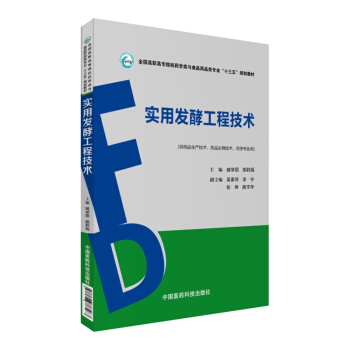
![Python生物信息学数据管理 [Managing Your Biological Data with Python] pdf epub mobi 电子书 下载](https://pic.tinynews.org/12106994/586d25fdN0f9a3bb3.jpg)
![物理化学(上册 第5版) [Physical Chemistry] pdf epub mobi 电子书 下载](https://pic.tinynews.org/12273914/5a743490N36719f49.jpg)

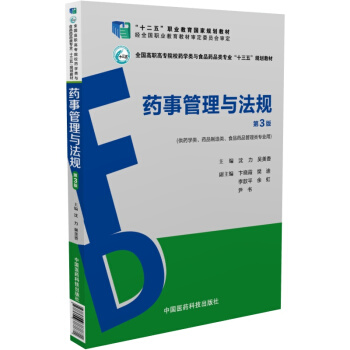
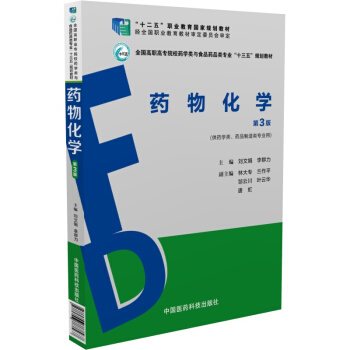
![物理化学(第五版 下册) [Physical Chemistry] pdf epub mobi 电子书 下载](https://pic.tinynews.org/12273930/5ac96d17N4e949300.jpg)
